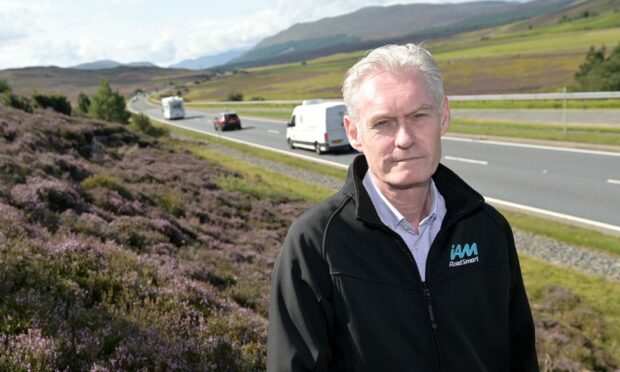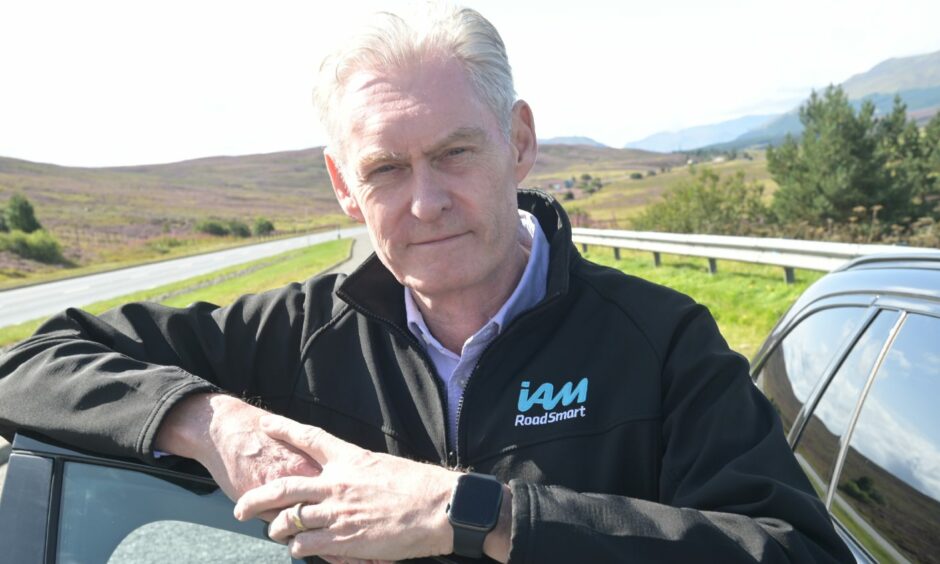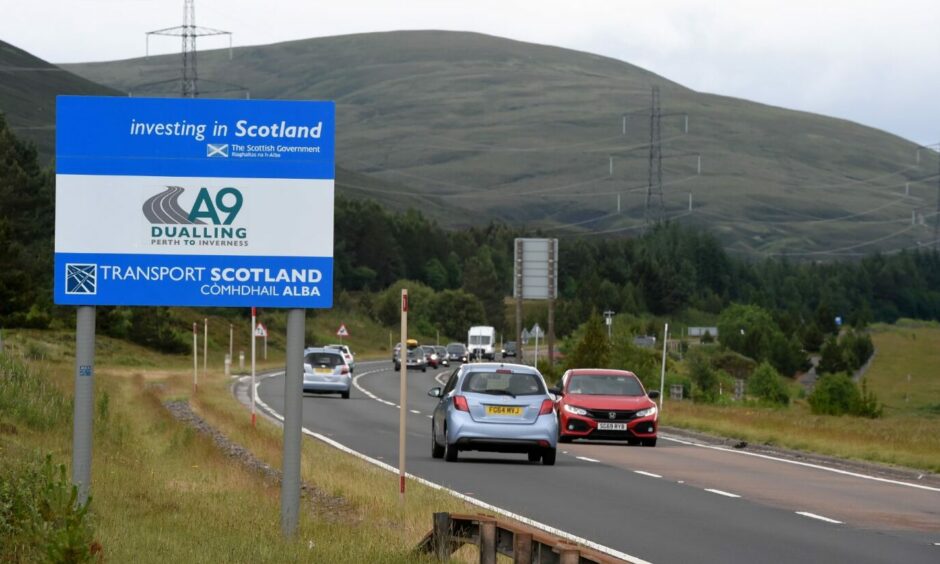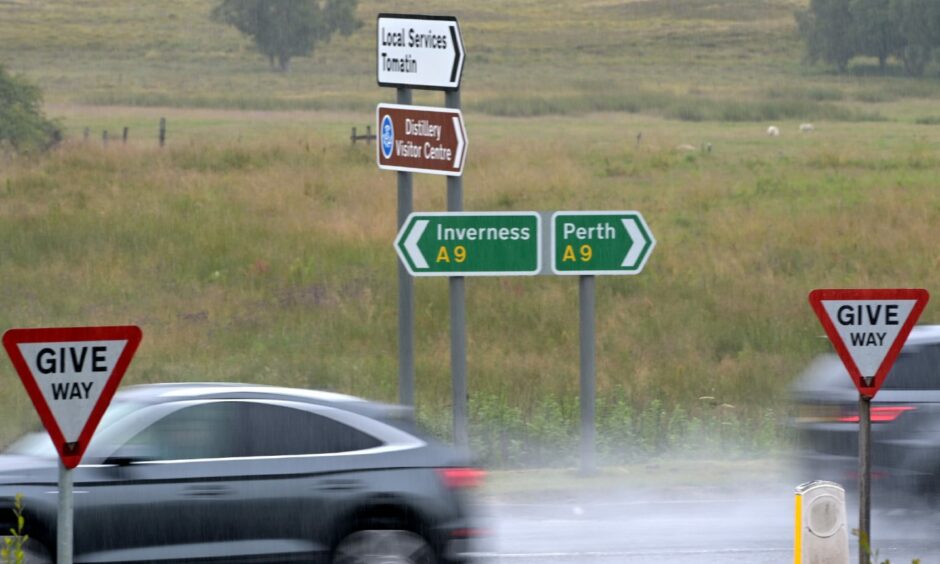Dualling the A9 would remove the main issues causing some of the most serious crashes on the route, a road safety expert believes.
Many accidents have happened near junctions where vehicles join or leave the trunk road.
Others have been caused by bad overtaking manoeuvres on single carriageway stretches.
Dualling would tackle both, says Neil Greig, policy and research director of the road safety charity IAM RoadSmart.
However, he fears environmental pressures may prevent the Perth-Inverness dualling programme being completed.
Dualling a key safety issue
“The key issue of dualling is the improvement to junctions it brings with it.
“You wouldn’t have right turn junctions on a dual carriageway and you wouldn’t have junctions coming on to the road.
“You would have proper grade separated junctions where people can join the road more safely.
“The A9 itself is a good road which most people should be able to cope with. It’s getting on and off the A9 that is becoming a key safety issue.
“Dualling would remove that. It would also remove the temptation to overtake badly.”
According to the A9 Safety Group, 63% of all fatal accidents on the A9 from Perth to the Tore roundabout are head on collisions.
It says 35% of all fatal accidents relate to overtaking, while 77% of all KSI (killed or seriously injured) accidents occurred on single carriageways.
Mr Greig says head-on crashes caused by poor overtaking and side-impact collisions at junctions are some of the least survivable accidents.
“That’s why you want to put as much effort as possible in removing those kind of crashes.
“Over the last 20 years or so, the A9 has got a reputation for being this killer highway and the figures unfortunately, particularly recently, have borne that out.
Junctions can be trouble spots
“We’ve seen recently an upsurge in really bad crashes and multiple fatalities and the Scottish Government had to be seen to be doing something about that.
“Dualling is what they were going to do. Unfortunately, that’s been put on hold.”
He said average speed cameras have helped improve safety and cut out some accidents.
“They got rid of a lot of the really stupid, over-100mph-type speeding that used to happen on the A9.
“But they don’t help with junction crashes, fatigue crashes or overtaking crashes.”
Junctions for places like Carrbridge, Aviemore north and south and Ralia are seen as particular trouble spots for emerging and turn-off traffic.
Campaigners say the Aviemore north junction in particular has issues with poor roads markings and broken bollards.
“The lack of dualling brings into sharp focus issues about junction safety”, said Mr Greig.
“A lot of the fatal crashes we’ve seen, some of them multi-fatals, have involved junctions.”
He said dualling would also give more consistent journey times so people may not take risks.
“It removes the overtaking problem, with people wanting to overtake to make progress.
“Whenever you have overtaking opportunities on a mainly single carriageway road you always get bad behaviour with people trying to get past as many vehicles as possible.”
It can be confusing
Mr Greig said the A9’s long, sinuous curves in either direction can make it difficult to judge overtaking.
He said moving from single to dual carriageway stretches can also be a challenge for some drivers.
“It shouldn’t be an issue, but be part of a normal driving experience.
“But when it’s happening many times over 100 miles, that’s unusual. You don’t have to think about that driving to other cities in Scotland.
“If you’re driving to Inverness you expect it to be a dual carriageway because it started that way but then you’ve got this chopping and changing going on. It can be confusing.”
Mr Greig says dualling also gives the opportunity to bring in bicycle lanes and active travel options and perhaps build in more rest areas.
Green transport spokesman Mark Ruskell has suggested roundabouts and junction improvements instead of the full dualling of the road.
Mr Greig said roundabouts can slow down traffic which is “something to think about”.
“But roundabouts on high-speed roads can be problematic. And they won’t remove all the crash risks.”
Will dualling be overtaken by green pressures?
First minister Humza Yousaf was criticised recently for failing to answer when the A9 will be dualled between Perth and Inverness.
So does Mr Greig think the dualling will ever be completed?
“My main fear is that it will be overtaken by environmental pressures.
“The thinking is ‘why widen a road when there is going to be no fossil fuels cars after 2030s, or people are supposed to be doing active travel’?
“But the active travel and public transport alternatives for this road are just not there.
“The railway is not good, buses are not going to cope with that amount of people going to different places and the freight deliveries to Inverness and beyond coming by road.
“We need this road as this level of traffic is going to carry on for the foreseeable future, at least another two decades.”
dct-timeline id=”a9-dualling” title=”A9 dualling latest” style=”grid” count=”12″ posts=”c=784789,5944396″]




Conversation